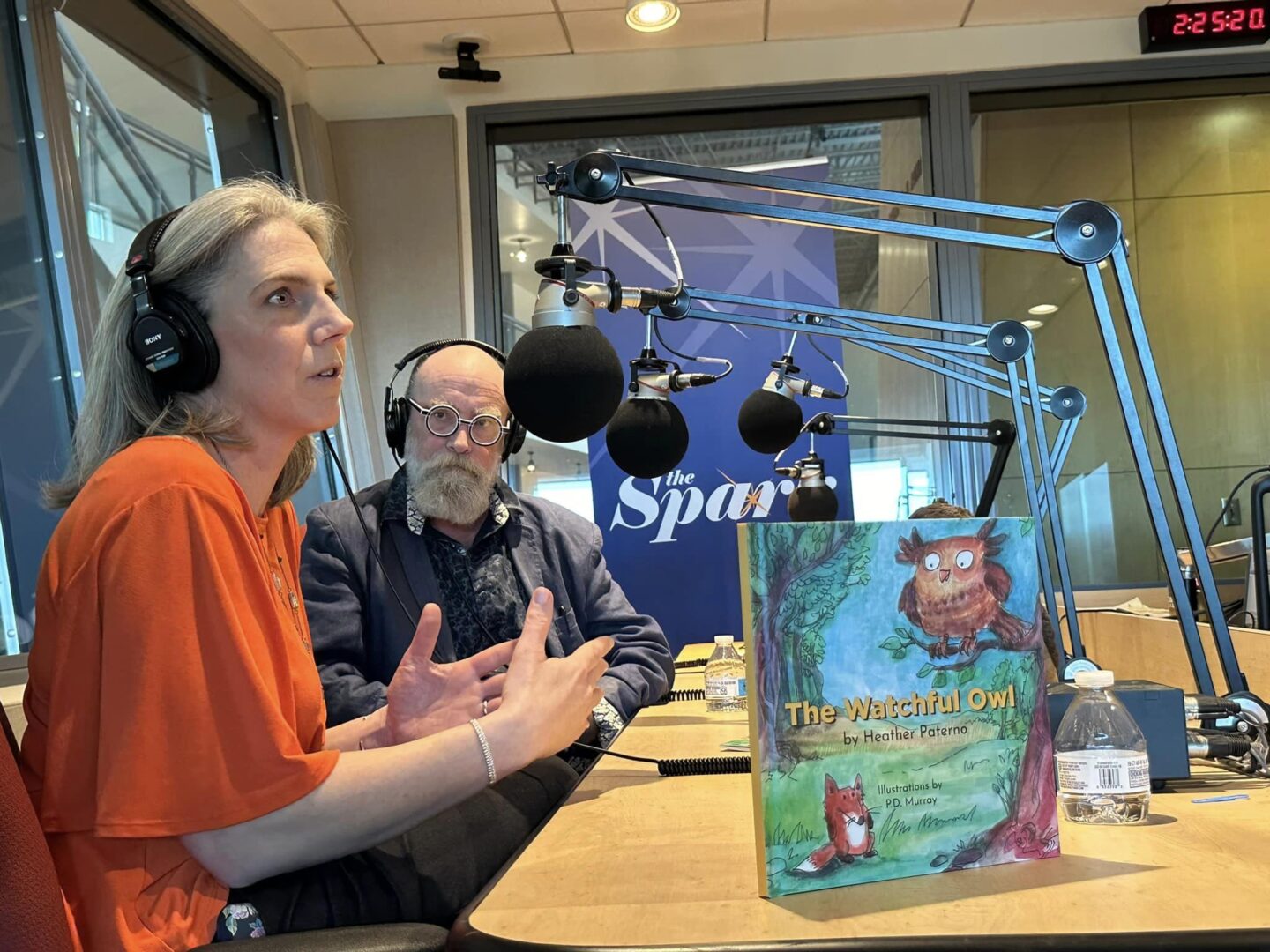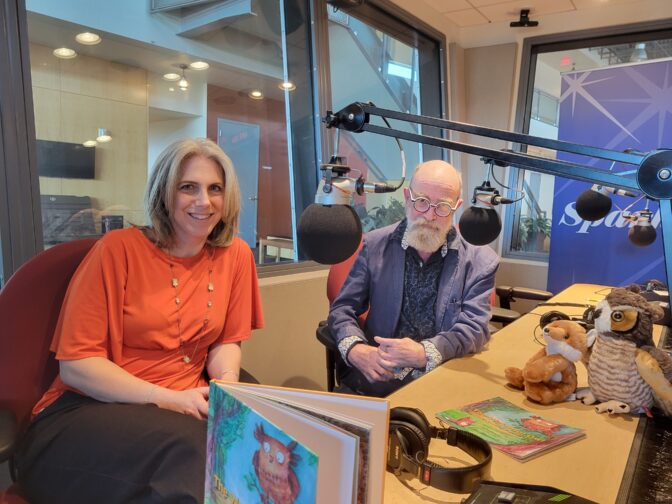
The Watchful Owl author Heather Paterno and illustrator P.D. Murray on The Spark, April 24, 2024

The Watchful Owl author Heather Paterno and illustrator P.D. Murray on The Spark, April 24, 2024

The Watchful Owl author Heather Paterno and illustrator P.D. Murray on The Spark, April 24, 2024
Aired; April 24th, 2024.
There are about 15,000 children in temporary foster care in Pennsylvania. Most of them will return to their family of origin.
It can be painful for kids to be separated from their parents or families and for younger children, it may be hard to understand what’s happening to them and around them.
A new children’s book called The Watchful Owl tells the story of a young fox that loses his parents and lives with another animal family.
It was written by Heather Paterno, an attorney who focuses on families and children’s issues and is a board member of Dauphin County’s Court Appointed Special Advocates for Children or CASA. The artwork in the The Watchful Owl also tells the story and will keep kids’ attention. It’s illustrated by artist P.D. Murray. Both Heather Paterno and P.D. Murray were with us on The Spark Wednesday.

The Watchful Owl author Heather Paterno and illustrator P.D. Murray
Paterno surmised the story,”The story is just a parable of sort of what could happen to a child in the foster care system, sort of told through a family of animals, so that children can understand it. And essentially what happens to Fennec is he doesn’t have a father who’s around. His mother’s working hard, raising the family. And tragically, something happens to her. She gets picked up by a hunter and the great owl, that’s a watchful owl, has always circled around the woods and looked out for all of the the creatures in the woods. And he gathers the community together. And they come up with a plan to look out for Fennec and his siblings.”
Fennec, the young fox is taken in by the deer family after he loses his mother. Paterno that’s part of the story behind the story,”There is a lesson there. And really it is how a child can walk through the dependency system. This is a very common thing that we do. We have what’s called family group conferences, where whenever a child is in care, obviously you want to keep them and the most natural place that you can. So that’s why we look to family members. That’s why we look to to community members. You never want to have to pick up a child and put them with strangers. Now this fox winds up being with strangers. But he also has two siblings that wind up living with family members. And it’s very common. You’ll see that a lot in the dependency system. They have these family group conferences and they bring in everybody. And how can we keep the child in their most natural environment of origin? And who are the supports? Who are the people that we can bring around to help assist this family?”
Murray’s illustrations help tell the story, especially of Fennec, who is vulnerable,”He’s small in most of the scenes. He’s little in these environments of these dark woods and larger animals and such. You know, people talk a lot about the importance of representation of kids, how they look, skin color, gender, all of those things in books. But I think it’s really critical to — and Heather has done this wonderfully to capture the needs state of children and to have representation of that. So this does a wonderful job of preparing children or children that aren’t in the foster system. Probably build some empathy out of reading a story like this.”
Murray was asked what the takeaway is from The Watchful Owl,”I think it’s a heartwarming story without being pollyannish. It really tells about the foster system when everything goes right, when there’s a champion for a child.”
Proceeds from sales of the book will go to Dauphin County’s CASA. Paterno explained what CASA does,”These are volunteers, community volunteers who get trained in child abuse and the dependency system. And then they are appointed either one child or one sibling group, one family group. And they also help to advocate for the child’s best interests through their entire court proceedings. And, what I can tell you in Dauphin County itself, we have over 350 children right now who are in foster care. That’s a lot of kids. And while each child has what I was, which was a guardian ad litem, I can tell you, is guardians of litem or G-A-L, as we call them for short. They often have anywhere from 60 to it can be 110 children. So it’s really tough to know what is going on with all of those children every day. Every moment of every day. What’s going -on in school, what’s going on in their home life, what’s going on, with them psychologically and emotionally. Are they getting checked in and seen regularly? So having this outside volunteer come in and represent that one child or one family where they can devote all of their time, to helping, maybe they can find that one psychological report that was buried, that had that one nugget of information that was helpful. And that’s what Dauphin County CASA does. They recruit and they train these advocates, to really make a difference in a child’s life.”
The days of journalism’s one-way street of simply producing stories for the public have long been over. Now, it’s time to find better ways to interact with you and ensure we meet your high standards of what a credible media organization should be.